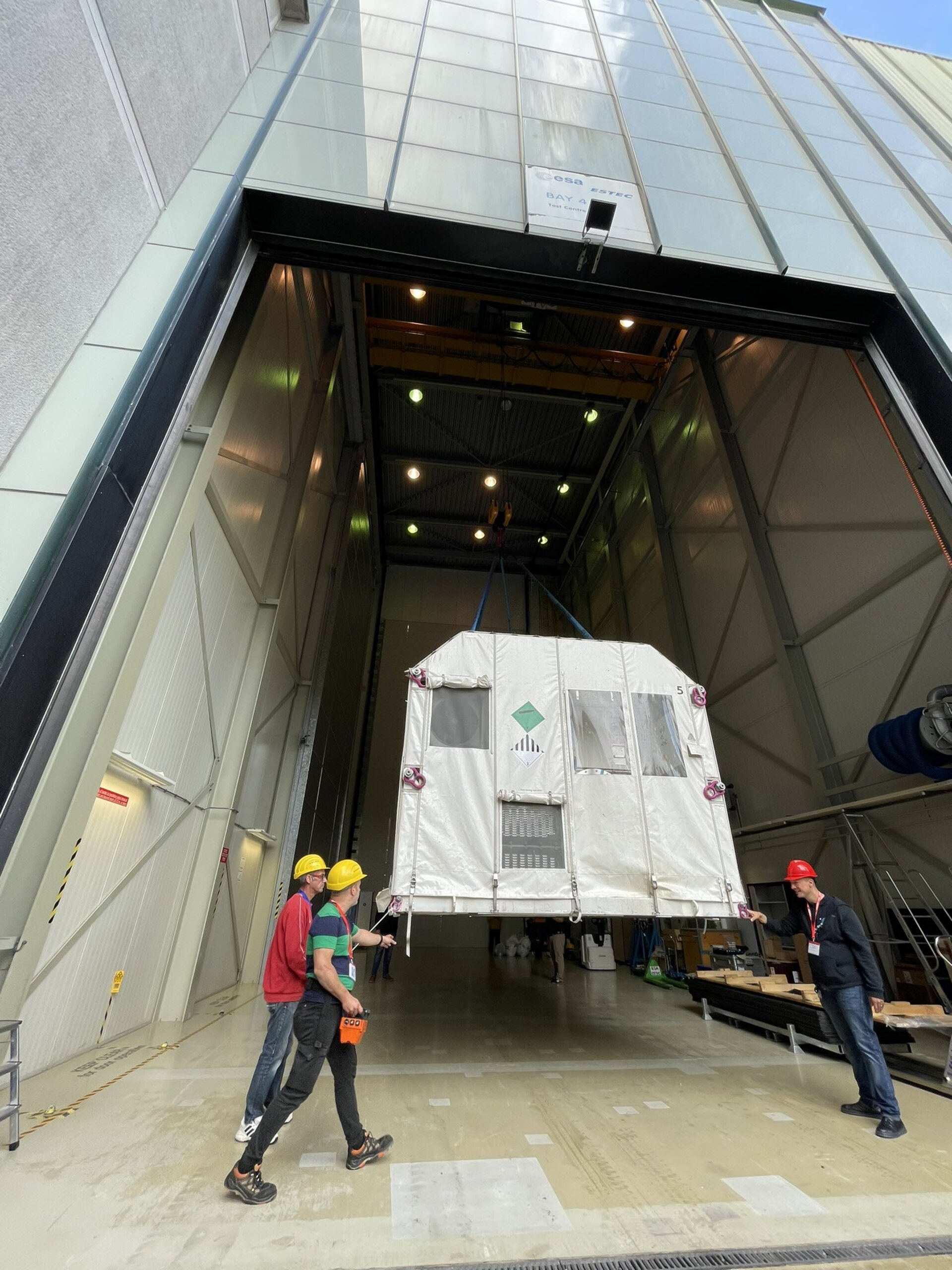Learn about the Hera asteroid mission
ESA’s Hera asteroid mission has arrived at the ESTEC Test Centre in the Netherlands, marking a significant milestone in the project. After being transported from its birthplace in Bremen, Germany, the van-sized spacecraft was placed inside an environmentally controlled container and left overnight in the airlock to allow for dust to settle and humidity to equalize. Paolo Martino, Hera lead system engineer, expressed his team’s excitement, stating that it took three years of hard work to reach this point.
Hera is Europe’s contribution to an international planetary defense experiment. The NASA DART mission, conducted last year, impacted the Dimorphos asteroid in deep space, altering its orbit and causing a plume of debris to scatter into space. Hera’s mission is to return to Dimorphos and conduct a close-up survey of the crater left by DART. Additionally, Hera will gather data on the mass and composition of Dimorphos and its parent asteroid, Didymos. This information will contribute to a better understanding of impact techniques that could be utilized in the future to protect Earth.
The ESTEC Test Centre, operated by European Test Services on behalf of ESA, is the largest facility of its kind in Europe. It provides comprehensive equipment for all aspects of satellite testing under one roof. Visitors will have the opportunity to explore ESTEC during this year’s ESA Open Day in the Netherlands, scheduled for the first weekend of October.
The successful arrival of Hera at the ESTEC Test Centre signifies a major accomplishment for the mission. After years of hard work, the spacecraft is now ready to undergo thorough testing and ensure its fitness for spaceflight before its launch in October 2024. The goal of Hera’s mission is not only to study the Dimorphos asteroid but also to refine impact techniques that could potentially be used to protect Earth from future threats. With the support of European Test Services, the ESTEC Test Centre provides an ideal environment for conducting these crucial tests.
Hera’s arrival at the test center is a testament to the dedication and expertise of the team behind the mission. Their relentless efforts over the past three years have brought them to this pivotal moment, and they are now one step closer to achieving their goals. The data collected by Hera during its mission will contribute to a deeper understanding of asteroids and the potential methods for defending our planet.
The ESTEC Test Centre’s role in supporting Hera’s mission cannot be understated. As the largest facility of its kind in Europe, it offers state-of-the-art equipment and resources to ensure accurate and reliable testing. With everything housed under one roof, the center provides a seamless experience for satellite testing, allowing for efficient and effective evaluation of spacecraft like Hera. Additionally, the opportunity to visit ESTEC during the ESA Open Day in October provides a unique chance for the public to witness the behind-the-scenes work that goes into such groundbreaking missions.
To wrap it up, Hera’s arrival at the ESTEC Test Centre is a significant milestone in the mission’s journey towards planetary defense. With its upcoming testing phase, the spacecraft will undergo rigorous evaluations to ensure its readiness for spaceflight. The data collected by Hera during its mission will contribute to our understanding of impact techniques and ultimately aid in safeguarding Earth from potential asteroid threats. The ESTEC Test Centre’s support and resources play a vital role in the success of missions like Hera, making it an integral part of Europe’s space exploration efforts.
